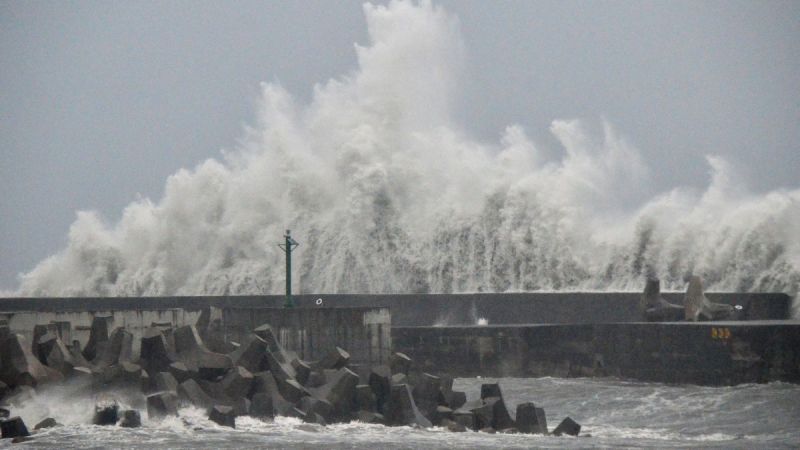Typhoon Podul has swept into Taiwan’s eastern county of Taitung, unleashing heavy rain, high winds, and powerful waves that have forced the evacuation of more than 5,500 residents, according to officials. The storm struck on Wednesday, leaving communities already recovering from an earlier summer storm bracing for renewed damage.
The Central Weather Administration reported wind gusts of up to 155km/h as Podul made landfall on Taitung’s coastline. Authorities swiftly moved to shut schools and government offices in affected areas, while airports cancelled hundreds of flights amid the deteriorating conditions.
Widespread disruption
At Kaohsiung International Airport, 252 domestic flights were grounded, while Taoyuan International Airport cancelled 129 international services. The cancellations stranded travellers and disrupted freight operations, with many airlines warning of further delays until weather conditions improve.
Social media footage from residents shows roads submerged under floodwaters, agricultural fields flattened by winds, and damage to both traditional and modern buildings. Local farmers have expressed concern over the loss of crops, as this marks the second major storm to hit the island in recent months.
Preparedness and warnings
Taiwan’s National Science and Technology Centre for Disaster Reduction urged residents in vulnerable areas to follow evacuation orders, particularly those living downstream of swollen rivers or in low-lying coastal regions.
“We must especially urge people living downstream to follow government instructions and evacuate,” a spokesperson said. “The risks from flooding and landslides remain extremely high.”
The storm has also impacted nearby regions. Hong Kong issued a Signal 1 typhoon alert as Podul approached, prompting precautionary measures. However, meteorologists expect the system to weaken as it moves further inland over southern China later this week.
A familiar challenge
Typhoons are a regular hazard for Taiwan between June and October, often bringing severe weather, landslides, and flooding. The island’s mountainous terrain can amplify the impact of heavy rain, making certain communities especially vulnerable.
Officials say that despite the disruptions, early warnings and evacuation plans have helped reduce the potential for casualties. Relief teams are on standby across affected counties, with emergency shelters prepared to house displaced residents.
Ongoing recovery
For many in Taiwan, the storm is a fresh setback in a difficult season. In July, another powerful typhoon swept across the island, damaging infrastructure, uprooting trees, and causing widespread power outages. Recovery from that storm had only just begun when Podul struck.
As of Wednesday evening, authorities were monitoring the storm’s path and preparing for possible after-effects, including residual flooding and agricultural losses. Weather officials have advised residents to remain cautious, even as conditions are forecast to gradually improve.

